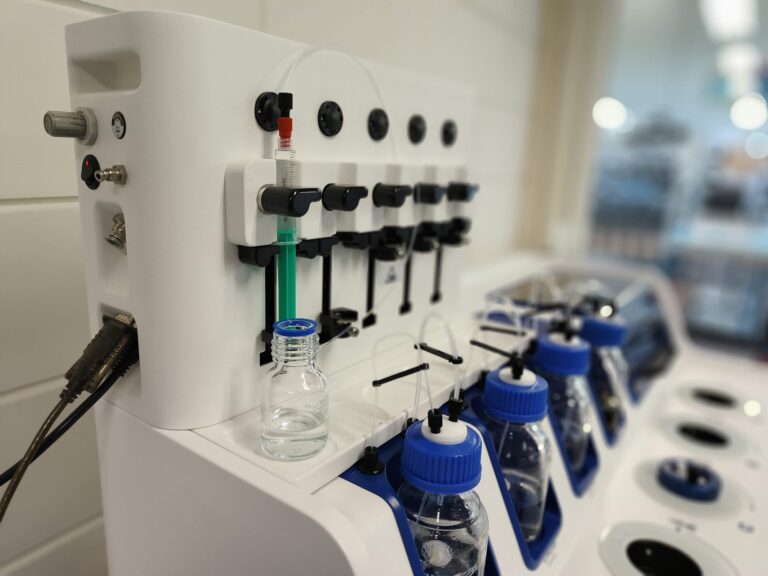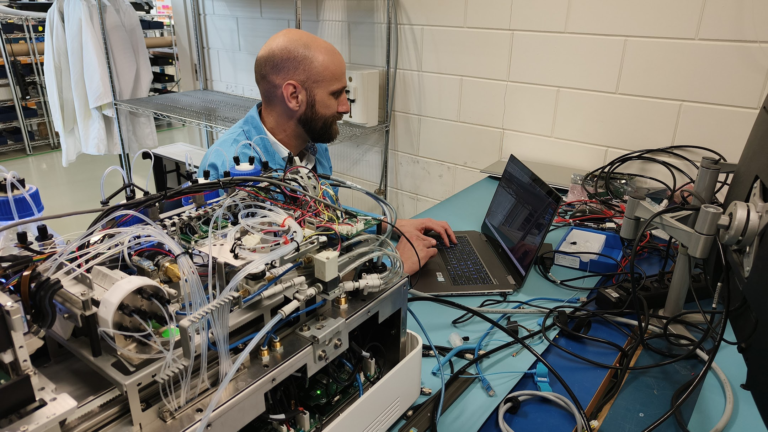Material Selection for Medical Devices: Ensuring Biocompatibility and Sterilization Stability in Plastics and Metals
In the medical industry, selecting the right materials for devices, tools, and processing equipment is a critical process. The materials used must not only fulfill functional requirements but also ensure biocompatibility and sterilization stability. Whether designing medical implants, surgical tools, or pharmaceutical processing devices, both plastics and metals play an integral role. Each material offers unique properties, but their performance in sterilization and interaction with the human body are paramount. In this article, we’ll explore the considerations for choosing the right plastics and metals for medical applications.
The Importance of Biocompatibility
Biocompatibility refers to how well a material interacts with human tissues and fluids without causing adverse reactions. For materials used in medical devices, this is essential to avoid issues like inflammation, toxicity, or immune system rejection. For implants or any device in long-term contact with the human body, selecting a material with high biocompatibility ensures patient safety and the long-term success of the device.
In general, biocompatibility is influenced by:
- Chemical composition: Materials should not release harmful substances or degrade inside the body.
- Surface properties: Smoothness, porosity, and hydrophilicity can affect how the body responds.
- Sterilization tolerance: The material must endure sterilization without altering its chemical or physical properties.
Sterilization Stability: A Key Requirement
Medical devices and tools must undergo various sterilization methods—autoclaving, ethylene oxide (EtO), and gamma radiation—to ensure they are free from harmful microorganisms. The challenge is selecting materials that remain stable and retain their structural integrity after repeated sterilization cycles. Any degradation in the material’s mechanical properties could compromise the safety or effectiveness of the medical device.
Metals for Medical Devices
Metals have been used for centuries in medical tools and implants due to their strength, durability, and corrosion resistance. Here are some of the most commonly used metals in the medical field, each chosen for specific applications based on their properties.
1. Stainless Steel (316L)
- Biocompatibility: 316L stainless steel is highly resistant to corrosion and is considered safe for short-term use in the human body. It is widely used for surgical instruments and some temporary implants.
- Sterilization Stability: This metal can withstand repeated autoclave cycles without losing its mechanical integrity, making it ideal for tools that require frequent sterilization.
- Use Case: Surgical instruments, needles, dental tools, and fasteners.
2. Titanium and Titanium Alloys
- Biocompatibility: Titanium is biocompatible and integrates well with bone tissue, making it the go-to material for implants such as joint replacements and dental implants.
- Sterilization Stability: It maintains its properties after gamma radiation or autoclaving, ensuring durability in long-term applications.
- Use Case: Orthopedic implants, dental implants, and pacemaker casings.
3. Cobalt-Chromium Alloys
- Biocompatibility: These alloys are known for their strength and wear resistance, with excellent corrosion resistance in biological environments.
- Sterilization Stability: They are stable under autoclaving and gamma radiation but require careful handling to avoid degradation during sterilization.
- Use Case: Hip and knee replacements, stents, and dental devices.
Plastics for Medical Devices
Plastics offer unique advantages, such as flexibility, lightweight properties, and the ability to be molded into complex shapes. They are increasingly used in disposable medical devices, drug delivery systems, and components in diagnostic devices.
1. Polyethylene (PE)
- Biocompatibility: High-density polyethylene (HDPE) is non-toxic and widely used in medical applications, particularly in joint replacements where it mimics the properties of cartilage.
- Sterilization Stability: It can endure ethylene oxide sterilization, but is less stable in high-heat methods like autoclaving.
- Use Case: Hip and knee replacements, catheters, and tubing.
2. Polyetheretherketone (PEEK)
- Biocompatibility: PEEK is highly biocompatible and is a preferred material for implants due to its combination of strength, flexibility, and resistance to bodily fluids.
- Sterilization Stability: PEEK can withstand autoclaving, EtO sterilization, and gamma radiation without significant degradation.
- Use Case: Spinal implants, dental implants, and surgical tools.
3. Polytetrafluoroethylene (PTFE)
- Biocompatibility: Commonly known as Teflon, PTFE is chemically inert and highly biocompatible, used in various applications where friction reduction is critical.
- Sterilization Stability: It is resistant to EtO and gamma radiation, but its performance can degrade slightly under high-temperature sterilization.
- Use Case: Vascular grafts, heart patches, and sutures.
4. Silicone
- Biocompatibility: Silicone is a versatile and highly biocompatible material, often used in flexible medical devices and implants due to its softness and non-reactive nature.
- Sterilization Stability: It is stable under autoclaving, EtO, and gamma radiation, making it suitable for devices requiring frequent sterilization.
- Use Case: Catheters, pacemaker leads, and breast implants.
Balancing Biocompatibility and Sterilization Needs
For any medical device, it’s crucial to select materials that strike the right balance between biocompatibility and sterilization stability. The following considerations should be made:
- Intended Use: Materials for short-term tools (e.g., surgical instruments) may not need the same biocompatibility as long-term implants.
- Sterilization Method: Materials must be chosen based on their compatibility with the sterilization methods they will undergo. For example, certain plastics degrade under high-temperature autoclaving but perform well with EtO.
- Regulatory Standards: All materials must comply with industry standards and regulations, such as ISO 10993 for biocompatibility and ASTM standards for medical device materials.
Conclusion
At Technobis, we understand that choosing the right material for medical devices is not just a technical decision—it’s a matter of safety and reliability. Whether selecting biocompatible metals like titanium for implants or high-performance plastics like PEEK for surgical tools, ensuring that these materials can withstand sterilization processes without losing functionality is critical. By considering both biocompatibility and sterilization stability, medical device manufacturers can ensure that their products meet the highest standards of safety, performance, and longevity.
Let us help you innovate in the medical field with materials that you can trust.




